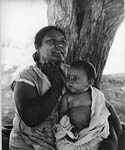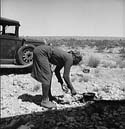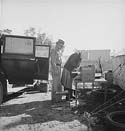Teaching the Article
Exercise 5
Lange images
Dorothea Lange was a portrait photographer for fifteen years, and her clientele was elite and prosperous. Yet in some ways, her documentary photography was not so different, because her primary interest was always in individuals. She had worked to perfect a method of conversing with her subjects, getting them to relax so that her portraits would reveal their natural personalities. In looking at these images done for the Farm Security Administration (fsa), consider the extent to which they are successful portraits.
Lange sharply disagreed with the cliché that a picture is worth a thousand words. Once she began doing documentary work, the captions she wrote for her photographs began the model that other fsa photographers were asked to emulate. Some of her captions were paragraphs long. She did not want her pictures to become universalized icons, like “Migrant Mother,” but wanted viewers to know the individual identity and actual circumstances of her subjects. As Lange put it, “I don’t like the kind of written material that tells a person what to look for … I like the kind of material that gives more background, that fortifies it without directing the person’s mind. It just gives him more with which to look at the picture.… I’m just trying to find as many ways as I can think of to enrich visible images so they mean more.”
Questions
- What feelings to these farm workers express in common?
- What do we learn from Lange’s captions that we could not learn from the photographs alone?
- What do we learn from the photographs that would have been harder to communicate in words?
- Do you find any inconsistencies between a photograph and its caption?
- What do we gain from Lange’s use of direct quotations from her subjects?
- Why did Lange write the very long caption on growing tobacco?
Documents
Growing tobacco caption (1939)









